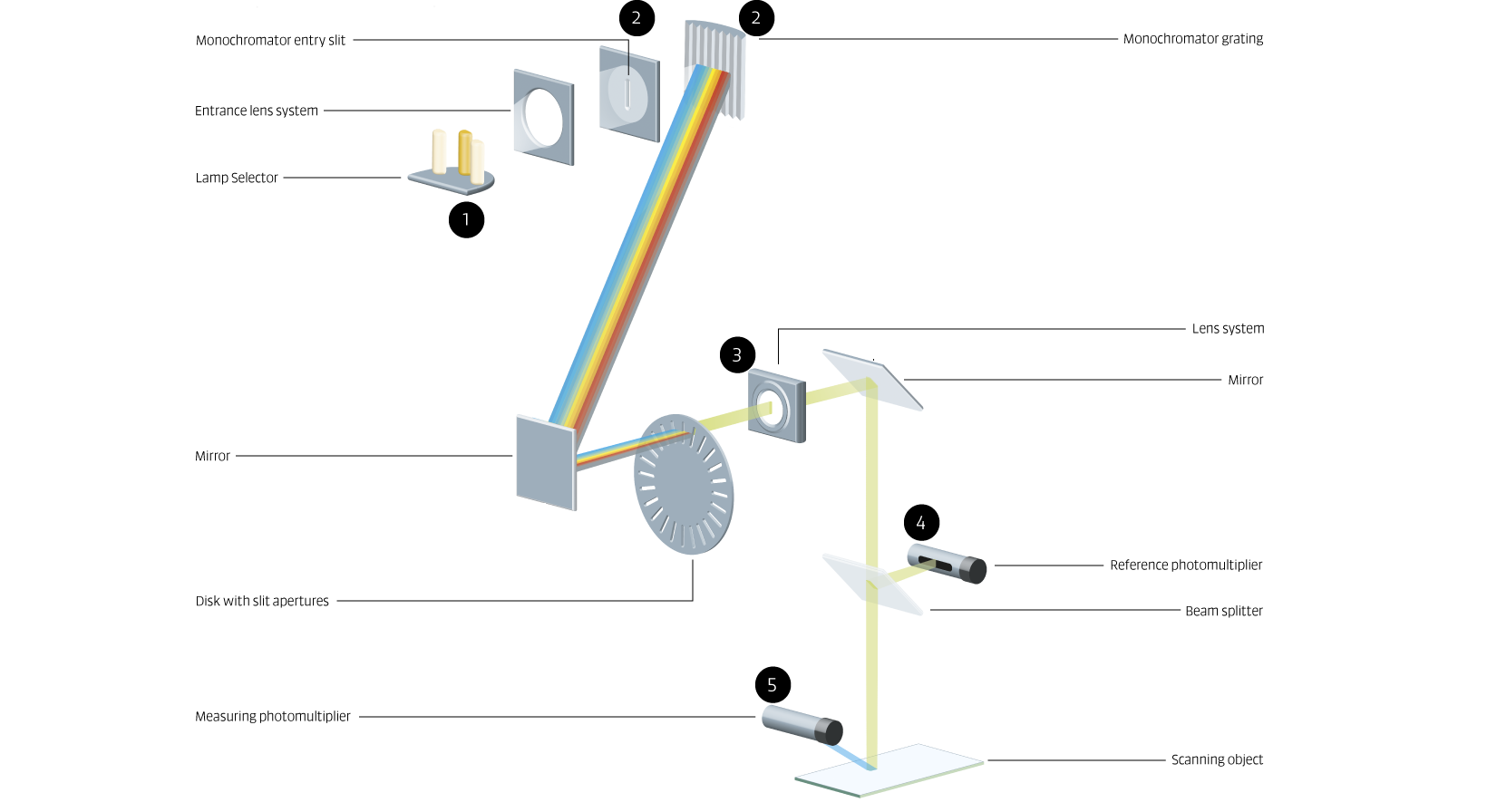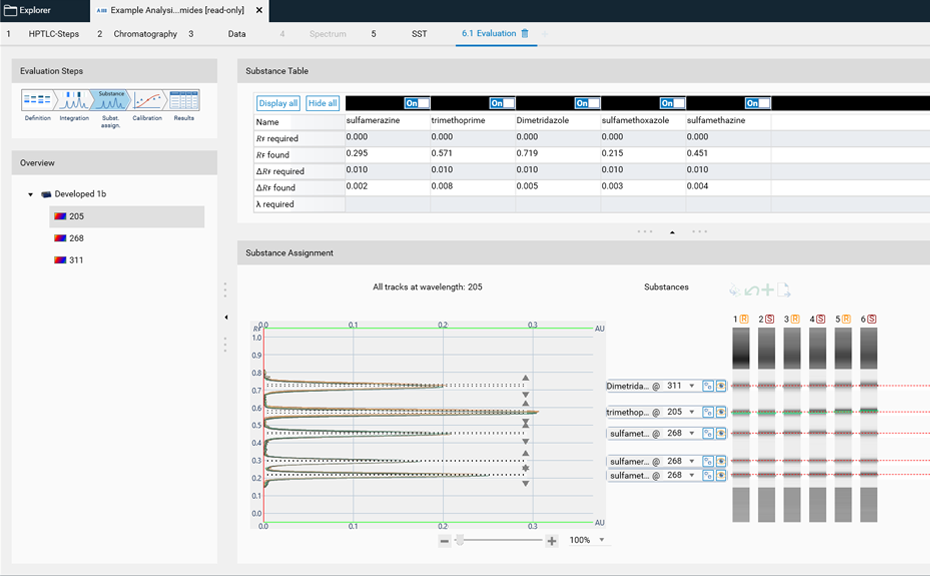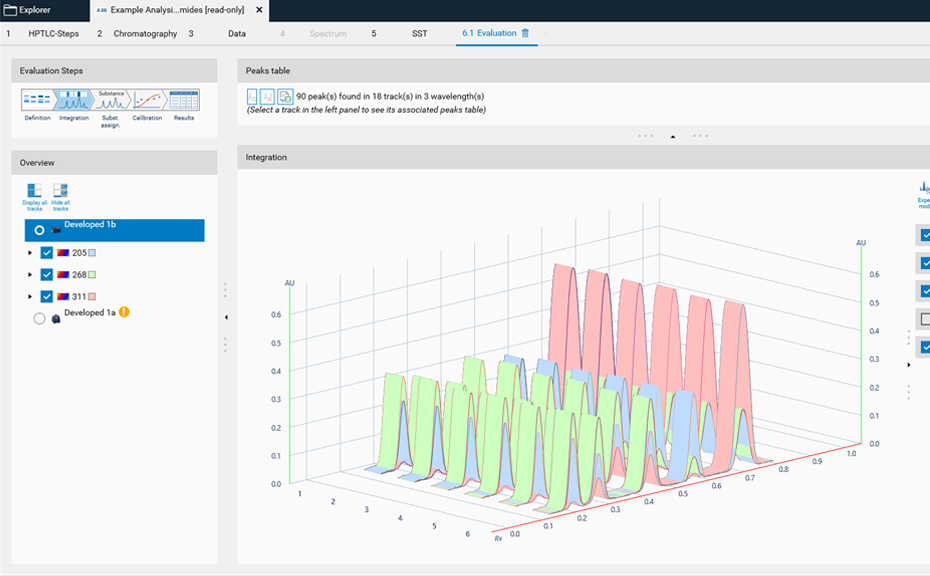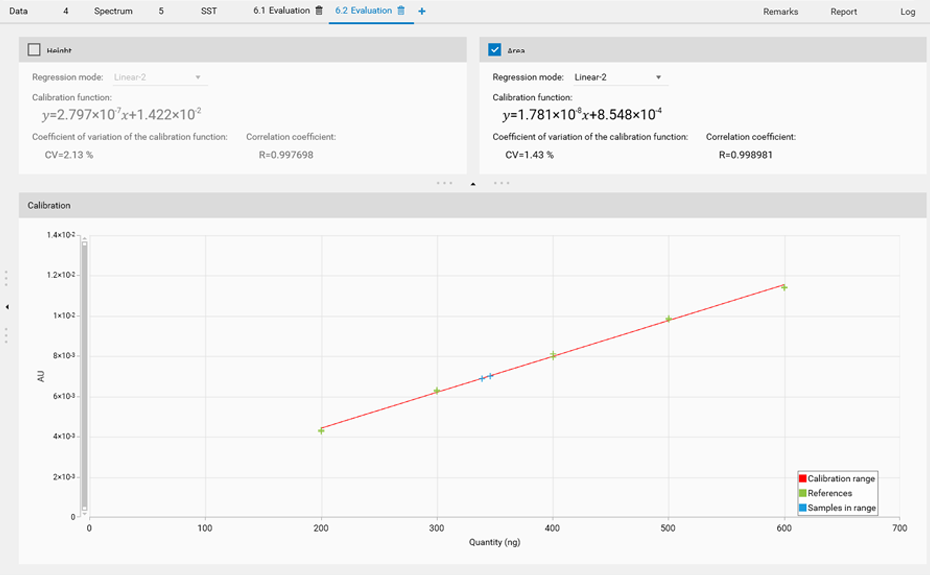
The TLC Scanner 4 is a scanning densitometer. It measures the reflection of separated compounds in absorption and/or fluorescence mode. Controlled by visionCATS software the TLC Scanner 4 enables quantitative evaluation of the generated densitometric data. The spectral range of light from 190 to 900 nm is available for selecting single or multiple wavelengths for scanning densitometry. Detection can thus be fine-tuned to match the spectral properties of the analyte to its optimized specificity and sensitivity of the detection.
Key Features
- Measurement of reflection, either in absorbance and/or fluorescence
- Spectral range from 190 to 900 nm
- Data step resolution 25–200 μm
- Spectrum recording up to 100 nm/s
- Any plate format up to 20 x 20 cm
- Software-controlled by visionCATS
Evaluation with visionCATS
visionCATS controls the TLC Scanner 4 and enables quantitative evaluation of the generated densitometric data. To determine the substance concentration in a sample, five different quantification functions (e.g. linear and polynomial) are available. Several scanning steps (e.g. scanning the plate after development and scanning the same plate after derivatization) and up to five different evaluations can be performed (with data obtained from single wavelength, multiple wavelengths or a combination of measurements in absorption and fluorescence detection mode).
The Scanner Ultimate Package:
- Multi Wavelength Scan: this feature offers the possibility to perform a multi-wavelength scan with up to 31 selected wavelengths or a combination of measurements in absorption and fluorescence detection mode.
- Scanner Quantification: this feature allows to quantify each individual substance on the plate. Five different quantification functions are available for evaluation to determine the concentration of the substance in a sample. In one analysis file up to five evaluation steps can be performed in multiple plate states (e.g. plate after development and same plate after derivatization).
- Spectrum Scan: this feature includes the measurement of the spectrum of each individual substance on the plate including the evaluation of the substance purity by comparison with reference standard.
The Optical System
- Any of the three light sources, high pressure mercury lamp, deuterium lamp, or halogen-tungsten lamp can be positioned in the light path by a motor drive. (1)
- The signal of the measuring photomultiplier is continuously offset against the signal of the reference photomultiplier. (4 and 5) This compensates for lamp aging and short-time fluctuations. It also reduces the warm-up time required to reach lamp stabilization.
- All components of the optical system, lamps, monochromator, scanning stage, and photomultiplier are mounted on one sturdy metal support. This ensures high precision of the detector signal.
- For scanning at wavelengths below 200 nm it is advisable to flush the monochromator with nitrogen. The TLC Scanner 4 is equipped to do this.
- A monochromator bandwidth of 5 nm or 20 nm can be selected. 5 nm bandwidth is used for spectra recording, multi-wavelength scanning, and when spectral selectivity is required. (2) 20 nm bandwidth offers higher light intensity (improves the signal to noise ratio and thus the reproducibility of the measurement) and enables measurement of several fractions with slightly different absorption maxima in one scan.
- The lens system with 190 – 900 nm transmission range features automatic positioning for micro and macro slit sizes. This ensures that the light energy available with small slits in the micro position is almost the same as that for the corresponding slit in the macro position, which is four times larger. (3)
- The light beam strikes the object at right angle. The photomultiplier is aligned at an angle of 30°. (5)

Technical Specifications
Light sources
- Deuterium lamp, usable continuum 190 – 450 nm
- Halogen-tungsten lamp, usable continuum 350 – 900 nm
- High-pressure mercury lamp, spectral lines (248, 254, 265, 280, 297, 302, 313, 366, 405, 436, 546, 577, 579 nm)
The lamp, which is positioned in the light path, is automatically ignited. All lamps are current stabilized.
Pilot lamp and compartment illumination
The slit is automatically illuminated with visible light when the compartment illumination is switched on. The scanning compartment is illuminated with a 4 W tube emitting UV 254 nm which the user can replace by a UV 366 nm or a white light tube.
Monochromator
Concave holographic grating, 1200 lines/mm, bandwidth selectable 5 or 20 nm, wavelength range 190–900 nm; monochromator driven by step motor, reproducibility of wavelength setting better than 0.2 nm, accuracy better than 1 nm; connector for flushing with nitrogen.
Maximum speed of spectra recording 100 nm/s.
Secondary filter
Motor-driven filter wheel with three automatically selected filters for the elimination of second order wavelengths; 400 nm cut-off filter for fluorescence measurements; three positions for user selected filters.
Scanning slit
Revolving disk with 20 fixed apertures; length of slit images selectable between 0.2 and 12 mm, width between 0.1 and 1.2 mm in 42 combinations
Detector
Two matched broadband photo multipliers, multi alkali type, spectral sensitivity 185 – 900 nm
Stage drive
Independent in both directions by step motors, micro step driven for smooth movement; reproducibility of positioning better than 50 μm in Y-direction, better than 100 μm in X-direction; maximum scanning speed 100 mm/s
Power connection
115 V and 230 V selectable; 50/60 Hz; maximum energy use 180 W (tungsten and mercury lamp ignited)
A/D converter
16 bit, 2-channel A/D converter, 100 ms per double conversion
Connections
RS-232 serial port
Dimensions (W x D x H)
590 x 650 x 367 mm
Weight
39 kg
Ordering Information
027.6200
CAMAG® TLC Scanner 4
for the densitometric evaluation of TLC/HPTLC plates, spectral range 190 to 900 nm, plate sizes up to 20 x 20 cm, absorbance and fluorescence mode, CAMAG visionCATS controlled
028.0000
CAMAG® HPTLC Software visionCATS Basic Version
including access and control of all instruments - 1 server, 1 client Instrument Diagnostics (xQ), analytical reports - access to method library. Needs to be bought separately and is not included in any Ultimate Package
028.1000
CAMAG® HPTLC Software visionCATS: visionCATS Ultimate
combining: Visualizer Ultimate Package (028.2000), Scanner Ultimate Package (028.3000); CAMAG HPTLC Software visionCATS Basic Version (028.0000) needs to be purchased separately
028.3000
CAMAG® HPTLC Software visionCATS: Scanner Ultimate Package
Multi Wavelength Scan, Spectrum Scan and Quantification; CAMAG HPTLC Software visionCATS Basic Version (028.0000) needs to be purchased separately.


